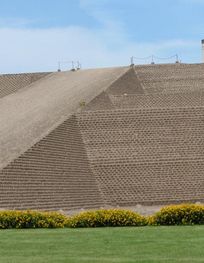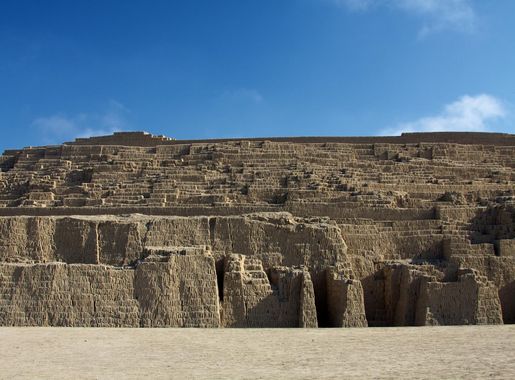
Lima: The City of Kings and Cultures
Explore Lima: A captivating blend of history, culture, and culinary delights. Discover the essence of Peru in its vibrant capital city, from colonial wonders to Pacific coast adventures.
Lima, the vibrant capital of Peru, is a city that beautifully blends rich history with modern charm. Nestled along the Pacific Ocean, Lima offers visitors a captivating mix of colonial architecture, pre-Columbian sites, and bustling urban life. As you wander through its streets, you'll find a tapestry of cultures, flavors, and experiences waiting to be discovered. The historical heart of Lima, known as the Historic Centre, is a UNESCO World Heritage Site. Here, you'll encounter grand plazas like Plaza Mayor, where Spanish colonial buildings and baroque churches stand as testaments to the city's storied past. Don't miss the stunning Basilica Cathedral of Lima and the Government Palace. For a deeper dive into history, the Larco Museum showcases an impressive collection of pre-Columbian art and artifacts. Food lovers will be in paradise in Lima. The city's culinary scene is world-renowned, blending indigenous ingredients with international influences. From fresh ceviche at a seaside restaurant to gourmet dining in the trendy Miraflores district, every meal is an adventure. The bustling markets and food festivals offer a chance to sample traditional dishes and meet the passionate chefs behind them. Lima's coastline is perfect for relaxation and adventure. The districts of Miraflores and Barranco offer stunning ocean views, vibrant nightlife, and charming streets lined with colorful murals and art galleries. Surfing, paragliding, and leisurely walks along the Malecón are popular activities that let you soak in the city's natural beauty. Whether you're a history enthusiast, a foodie, or an adventure seeker, Lima has something to offer. Discover the warmth and hospitality of its people, the richness of its culture, and the allure of its seaside charm.
Local tips in Lima
- Visit the Historic Centre early in the morning to avoid crowds and enjoy the architecture in peace.
- Try the local ceviche at a reputable restaurant for an authentic taste of Lima's culinary heritage.
- Use official taxis or ride-sharing apps for safe and convenient transportation around the city.
- Stay in the Miraflores or Barranco districts for easy access to the best dining, nightlife, and ocean views.
- Explore the local markets like Mercado Central for fresh produce, local delicacies, and unique souvenirs.
- Learn a few basic Spanish phrases to enhance your interactions with locals and navigate the city more easily.
Neighbourhoods in Lima
Lima: The City of Kings and Cultures
Lima, the vibrant capital of Peru, is a city that beautifully blends rich history with modern charm. Nestled along the Pacific Ocean, Lima offers visitors a captivating mix of colonial architecture, pre-Columbian sites, and bustling urban life. As you wander through its streets, you'll find a tapestry of cultures, flavors, and experiences waiting to be discovered. The historical heart of Lima, known as the Historic Centre, is a UNESCO World Heritage Site. Here, you'll encounter grand plazas like Plaza Mayor, where Spanish colonial buildings and baroque churches stand as testaments to the city's storied past. Don't miss the stunning Basilica Cathedral of Lima and the Government Palace. For a deeper dive into history, the Larco Museum showcases an impressive collection of pre-Columbian art and artifacts. Food lovers will be in paradise in Lima. The city's culinary scene is world-renowned, blending indigenous ingredients with international influences. From fresh ceviche at a seaside restaurant to gourmet dining in the trendy Miraflores district, every meal is an adventure. The bustling markets and food festivals offer a chance to sample traditional dishes and meet the passionate chefs behind them. Lima's coastline is perfect for relaxation and adventure. The districts of Miraflores and Barranco offer stunning ocean views, vibrant nightlife, and charming streets lined with colorful murals and art galleries. Surfing, paragliding, and leisurely walks along the Malecón are popular activities that let you soak in the city's natural beauty. Whether you're a history enthusiast, a foodie, or an adventure seeker, Lima has something to offer. Discover the warmth and hospitality of its people, the richness of its culture, and the allure of its seaside charm.
When is the best time to go to Lima?
Iconic landmarks you can’t miss
Magic Water Circuit of the Reserve Park
Experience the enchanting Magic Water Circuit in Lima, where mesmerizing lights and dancing fountains create a magical atmosphere for all visitors.
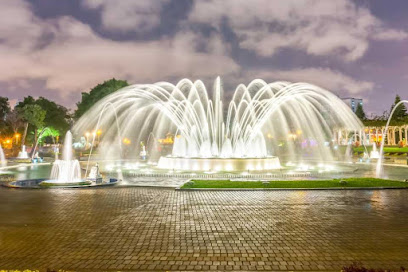
Lima Main Square
Explore Lima Main Square, a vibrant historical landmark surrounded by stunning colonial architecture, rich culture, and lively local experiences.
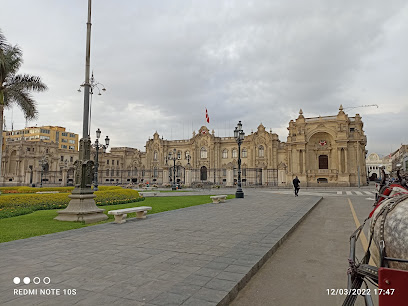
St Martin Square
Explore St Martin Square, a historical landmark in Lima, where culture, community, and nature beautifully intertwine.

Love's Park
Experience the beauty and tranquility of Love's Park in Miraflores, where stunning gardens and ocean views create a perfect escape for tourists.
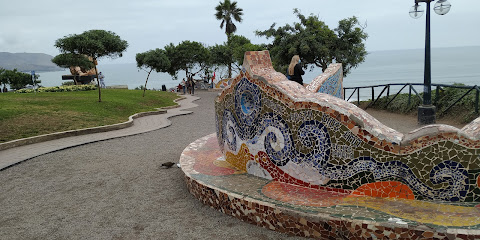
Iglesia Las Nazarenas
Explore the architectural beauty and serene atmosphere of Iglesia Las Nazarenas, a must-see church in Lima, Peru, reflecting the city's rich cultural history.
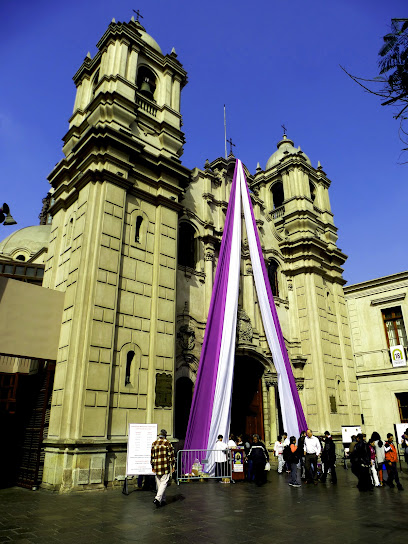
Basílica and Convent of San Francisco, Lima
Explore the stunning Basilica and Convent of San Francisco in Lima, a UNESCO World Heritage Site showcasing exquisite Baroque architecture and haunting catacombs.

Maria Reiche Park
Maria Reiche Park: A tranquil oasis in Miraflores, blending nature, history, and stunning views of Lima's coastline.
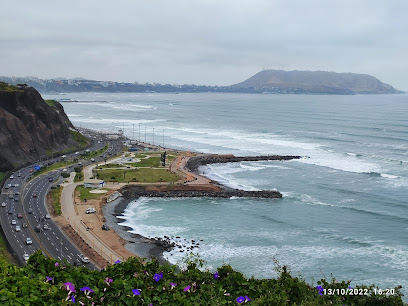
Huaca Pucllana Site Museum
Explore Huaca Pucllana, an ancient archaeological site in Miraflores, Lima, showcasing the rich heritage of the Lima culture through stunning ruins and informative exhibits.
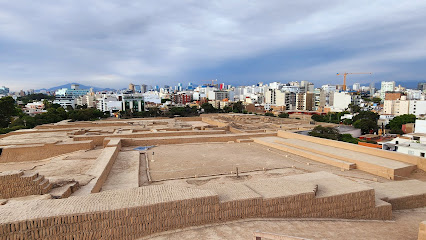
Paseo de los Heroes Navales - Plaza Grau
Discover the vibrant Paseo de los Heroes Navales - Plaza Grau, a beautiful pedestrian zone in Lima, rich in history, culture, and greenery.
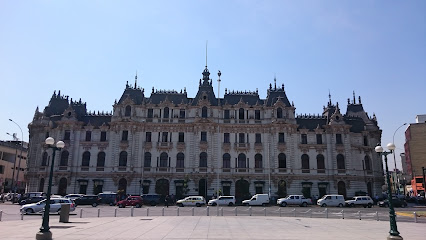
Miguel Grau Square
Explore the historical charm of Miguel Grau Square, a vibrant landmark in Lima, Peru, offering rich culture, stunning architecture, and lively local life.

Larco Museum
Explore the Larco Museum in Lima, a treasure trove of pre-Columbian artifacts and a must-see for history enthusiasts.
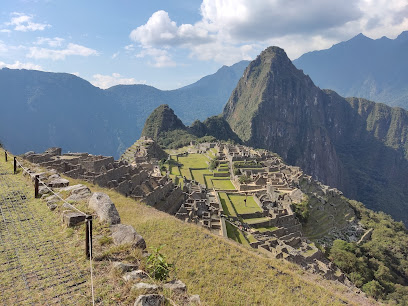
Muninet Parque La Muralla
Discover the beauty and history of Muninet Parque La Muralla, a serene urban park in Lima offering lush landscapes and colonial charm.
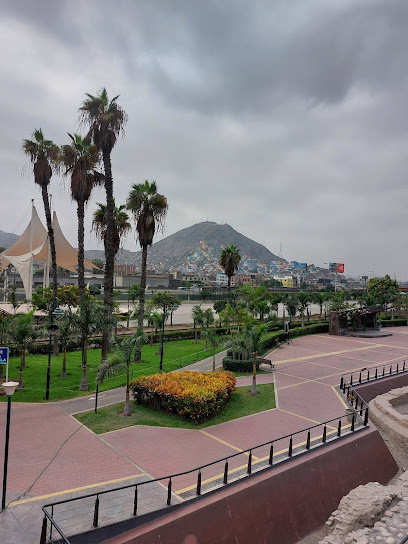
PLAZA DE LA BANDERA
Discover Plaza de la Bandera in Pueblo Libre: a vibrant cultural hub adorned with beautiful gardens and historical monuments.
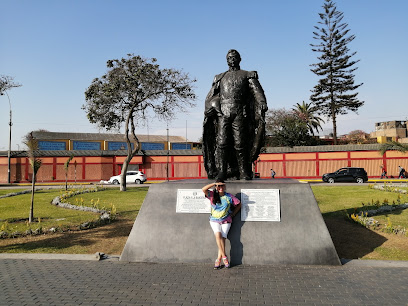
Marine Lighthouse
Explore the Marine Lighthouse in Miraflores, a historical landmark offering stunning ocean views and lush park surroundings for an unforgettable experience.
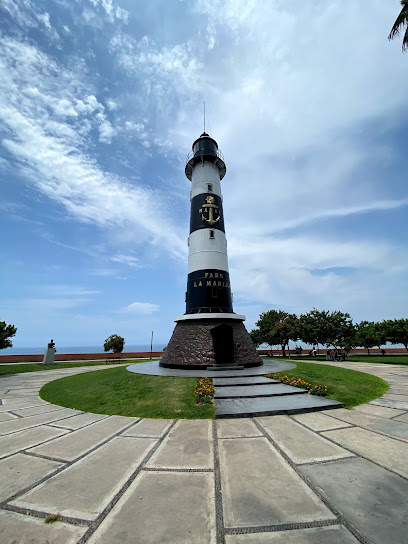
Lima Cathedral
Discover the grandeur of Lima Cathedral, a stunning example of colonial architecture and a key historical site in Peru's vibrant capital.
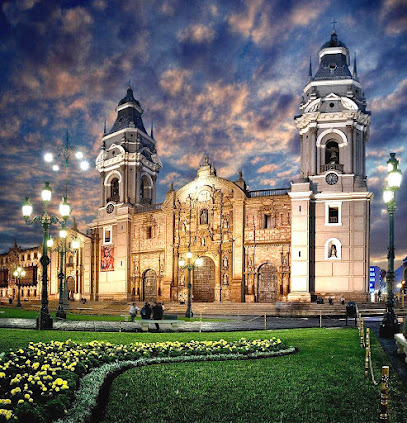
Unmissable attractions to see
Magic Water Circuit of the Reserve Park
Experience the largest fountain complex in the world at Lima's breathtaking Magic Water Circuit, where water, light, and music create unforgettable moments.
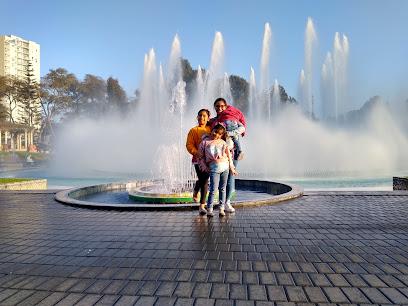
Lima Main Square
Experience Lima's historic Main Square, a vibrant cultural hub surrounded by stunning architecture and rich Peruvian heritage.
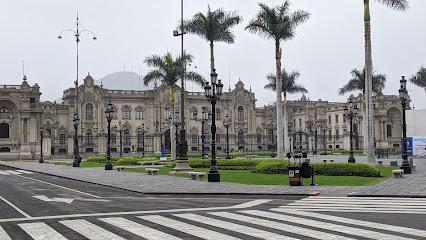
Park of the Exposition
Explore the Park of the Exposition in Lima, a green paradise filled with cultural treasures, beautiful gardens, and vibrant community events.

Kennedy Park
Experience the lively atmosphere of Kennedy Park in Miraflores, a cultural hub filled with art, local cuisine, and friendly feline residents.
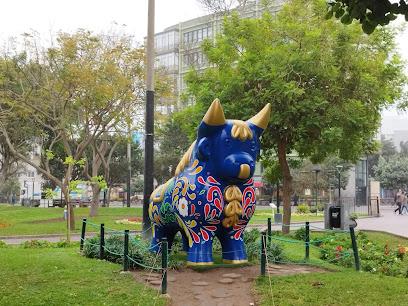
St Martin Square
Discover the charm of St. Martin Square in Lima, a perfect blend of historical significance and serene park atmosphere amidst the city's vibrant landscape.
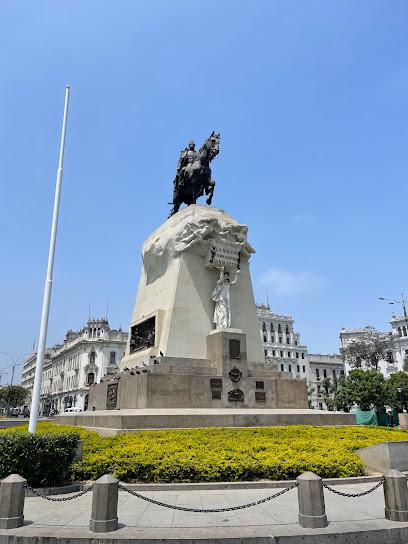
Mars Field
Experience the tranquility of Mars Field, a picturesque park in Jesús María, perfect for relaxation, art exploration, and enjoying nature in Lima.
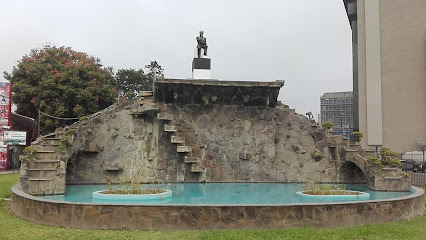
Friendship Park
Explore the natural beauty and recreational charm of Friendship Park in Santiago de Surco, a perfect getaway for tourists seeking relaxation and adventure.
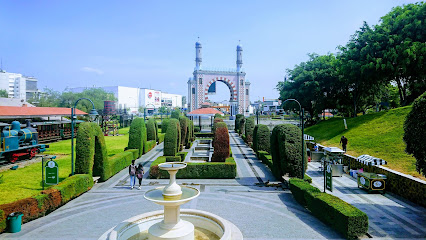
Love's Park
Explore the romantic charm of Love's Park in Miraflores, where stunning ocean views and lush gardens create a serene escape in Lima.
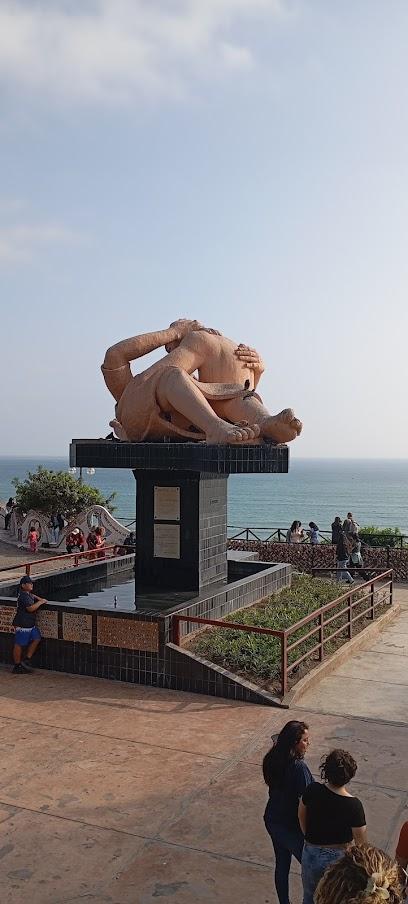
Estadio Nacional
Experience the passion of Peruvian sports culture at Estadio Nacional, Lima's iconic stadium and cultural hub for thrilling events.
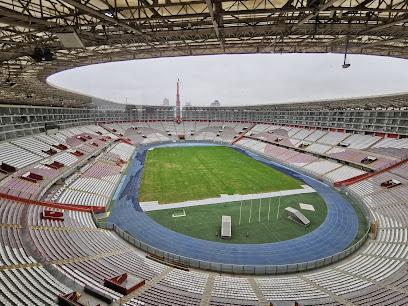
Iglesia Las Nazarenas
Explore the architectural beauty and spiritual significance of Iglesia Las Nazarenas, a must-visit landmark in the heart of Lima, Peru.

Bridge of Sighs
Discover the romantic charm and historical significance of the Bridge of Sighs in Barranco, a picturesque landmark in Lima, Peru.

Monumental U Marathon Stadium
Discover the vibrant spirit of Peruvian sports culture at Monumental U Marathon Stadium, a premier destination for fans and tourists alike.
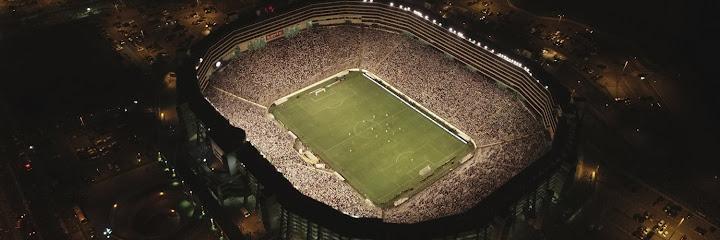
Arco Chino de Lima - Calle Capón / Barrio Chino
Explore the vibrant culture and history at Arco Chino de Lima, the gateway to Lima's bustling Chinatown.
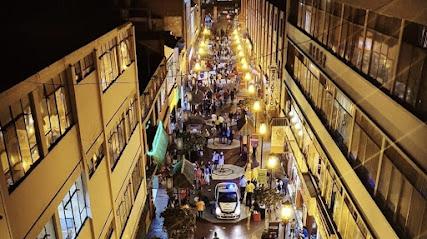
Huaca Pucllana Site Museum
Explore the ancient wonders of Huaca Pucllana, an archaeological gem in Miraflores showcasing Lima's pre-Hispanic culture and history.
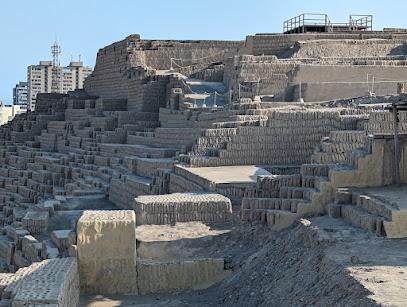
Paseo de los Heroes Navales - Plaza Grau
Discover the peaceful charm of Paseo de los Heroes Navales - Plaza Grau, a historical park in Lima perfect for leisurely strolls and cultural exploration.

Essential places to dine
Panchita - Miraflores
Discover the essence of Peruvian cuisine at Panchita in Miraflores - a must-visit restaurant known for its authentic dishes and vibrant atmosphere.
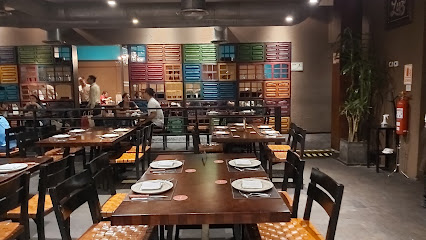
Restaurant Huaca Pucllana
Experience authentic Peruvian cuisine at Restaurant Huaca Pucllana amidst ancient ruins in Lima.
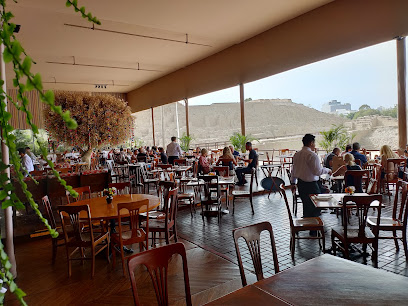
Astrid y Gastón
Experience culinary excellence at Astrid y Gastón – where tradition meets innovation in every exquisite dish.
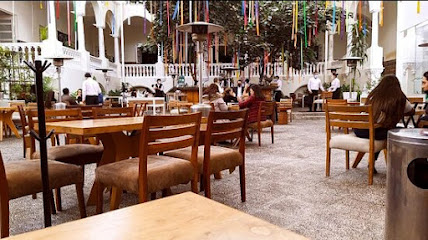
Isolina
Discover the vibrant flavors of Peru at Isolina - where tradition meets modern dining in the heart of Lima.
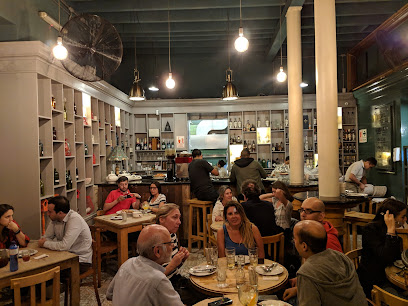
La Vista Restaurant
Experience exquisite Peruvian cuisine with stunning ocean views at La Vista Restaurant in Lima, where every meal is a celebration of local flavors.
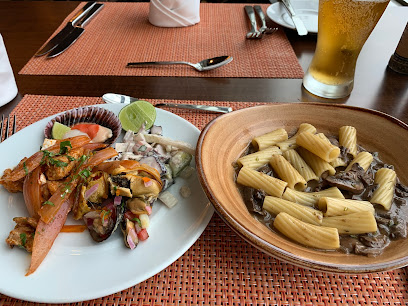
Maido
Discover the essence of Peruvian cuisine at Maido in Miraflores—an exquisite blend of tradition and innovation awaits.
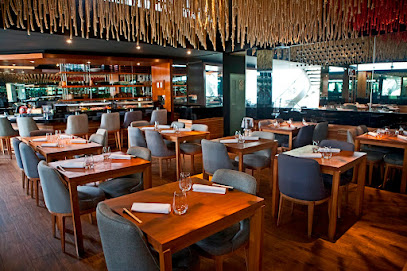
Central
Discover the essence of Peruvian cuisine at Central - an innovative dining experience showcasing biodiversity through artfully crafted dishes.
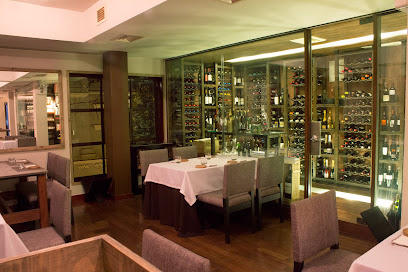
Barra Maretazo
Experience authentic Peruvian seafood at Barra Maretazo in Miraflores - where tradition meets taste.
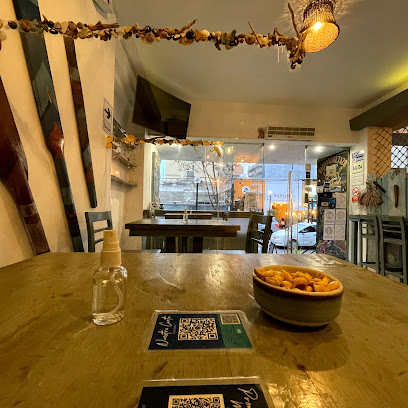
Rafael
Discover Rafael in Miraflores: Where Fine Dining Meets Innovative Peruvian Cuisine for an Unforgettable Experience.
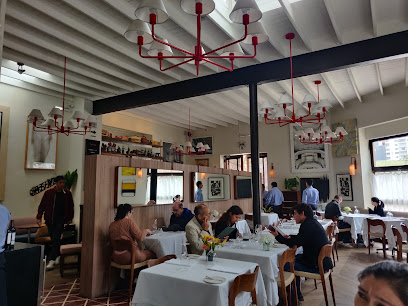
Social Restaurant & Bar
Discover the essence of Peruvian cuisine at Social Restaurant & Bar in Miraflores—where tradition meets modernity.
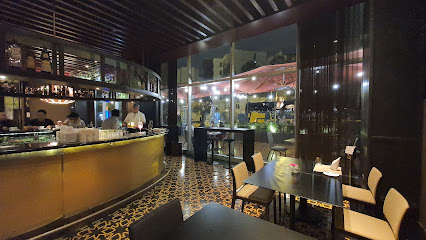
Casa Tambo Restaurant
Experience authentic Peruvian cuisine at Casa Tambo in Lima - where tradition meets flavor in every dish.
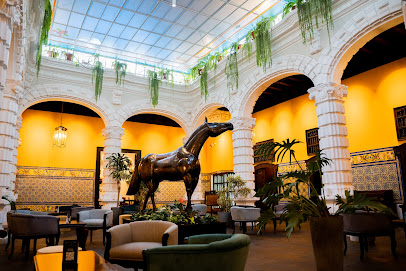
Puerto Norte Spain
Savor authentic Peruvian cuisine at Puerto Norte, where tradition meets modernity in a vibrant bar setting.

PERÚ GOURMET
Experience authentic Peruvian flavors at Perú Gourmet in Lima - where tradition meets taste.
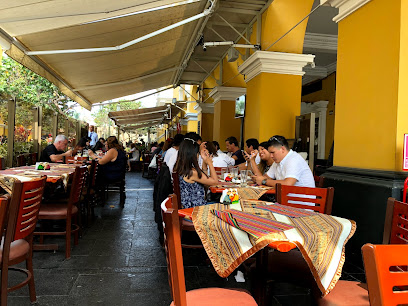
L'Eau Vive Del Peru
Experience the enchanting blend of French cuisine and historic charm at L'Eau Vive Del Peru in Lima.

Restaurante Maras
Experience the exquisite fusion of traditional and modern Peruvian cuisine at Restaurante Maras in San Isidro.
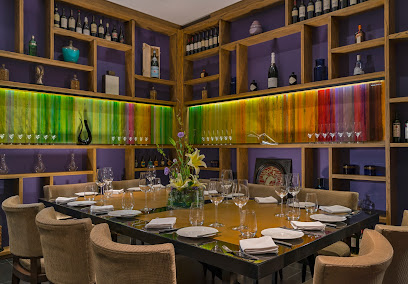
Markets, malls and hidden boutiques
Larcomar
Discover Larcomar, a shopping paradise in Miraflores, offering breathtaking ocean views, diverse dining, and a vibrant atmosphere.
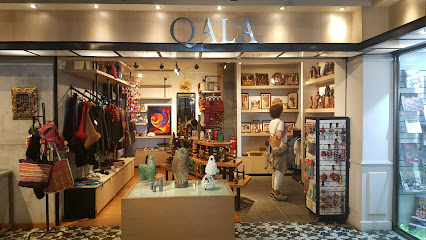
Real Plaza Centro Cívico
Experience the best of shopping, dining, and entertainment at Real Plaza Centro Cívico, Lima's vibrant shopping hub.
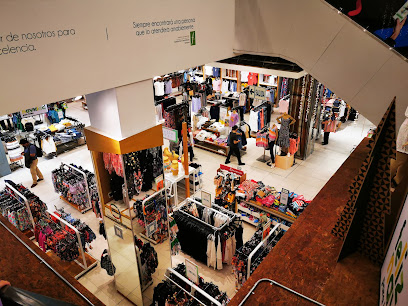
Real Plaza Salaverry
Experience the vibrant culture and diverse shopping options at Real Plaza Salaverry, a premier destination in Jesús María, Peru.
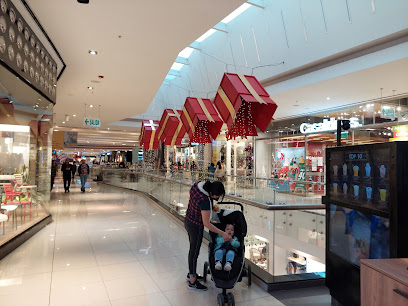
Miraflores Indian Market
Explore the Miraflores Indian Market, a vibrant hub of Peruvian culture filled with unique handicrafts, local art, and delicious traditional snacks.
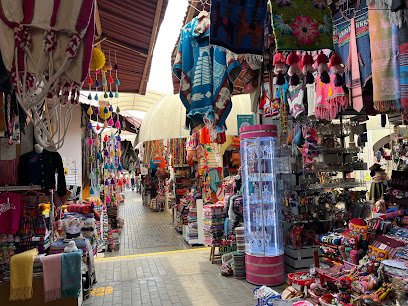
Dédalo
Explore Dédalo in Barranco, a vibrant art gallery and craft store with live music, local handicrafts, and a charming dog-friendly cafe.
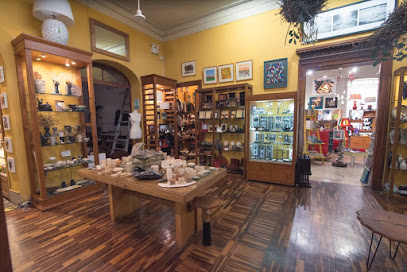
Mercado Artesanal
Discover the heart of Peruvian culture at Mercado Artesanal, where vibrant crafts and delicious street food await every visitor.
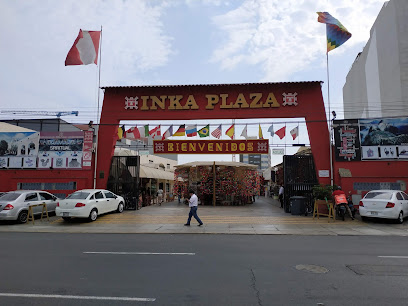
Mercado Indio
Discover the rich artistry of Peru at Mercado Indio, a vibrant market in Miraflores filled with unique handicrafts and cultural treasures.
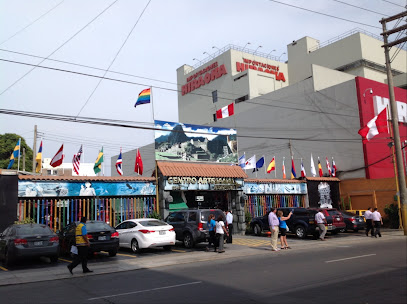
ANGELIC, the store Angels
Explore ANGELIC, the Gift Shop in Lima, for unique souvenirs that capture the heart of Peru's rich culture and artistry.
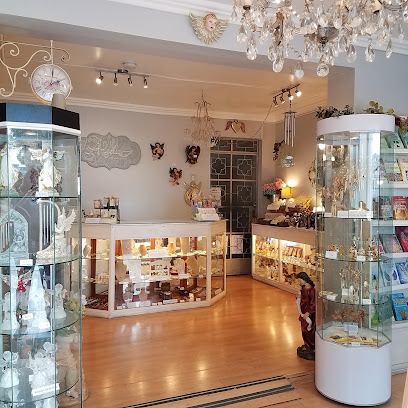
KUNA Larco
Discover KUNA Larco: A premier clothing store in Miraflores, offering stylish apparel and authentic Peruvian textiles made from high-quality materials.
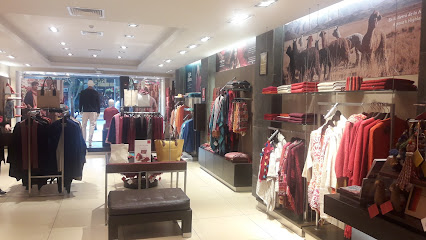
Tiendas Kpop Luzfyf
Explore the latest K-Pop fashion trends at Tiendas Kpop Luzfyf - a must-visit destination for style-savvy tourists in Lima.

Galería EL PARQUE(audifonos por mayor )
Discover unbeatable deals on headphones and audio accessories at Galería EL PARQUE, Lima's premier shopping destination for tech enthusiasts.
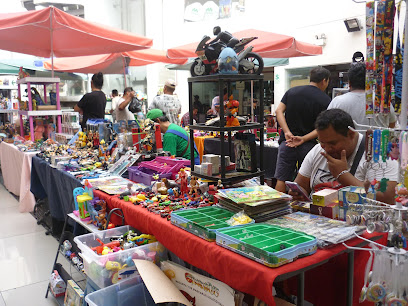
Dédalo Larcomar
Explore the vibrant world of Peruvian art and crafts at Dédalo Larcomar, your destination for unique gifts and souvenirs in Miraflores, Lima.
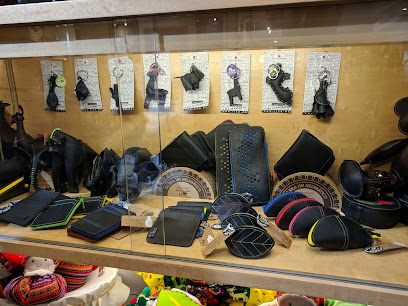
Que Tal Vicio Store
Explore Que Tal Vicio Store in Lima, a treasure trove for video game enthusiasts, featuring a vast selection and a welcoming atmosphere.
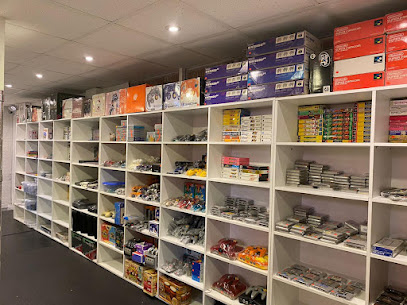
Lima Palace Shopping Center
Discover the vibrant shopping and dining experience at Lima Palace Shopping Center, the perfect destination for a memorable day in Lima.
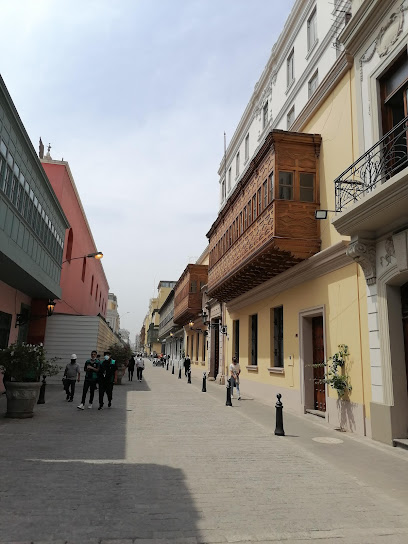
TodoModa tiendas
Explore the latest fashion trends at TodoModa, a stylish clothing store in Lima offering a diverse range of trendy apparel for all ages.
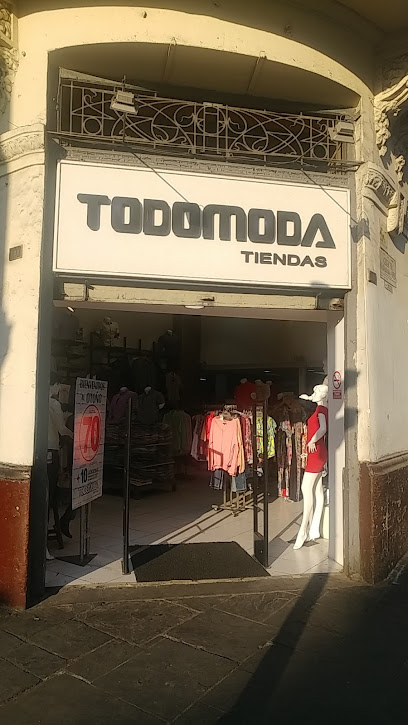
Essential bars & hidden hideouts
Molly's Irish Bar & Restaurant
Savor authentic Irish cuisine and live music in the heart of Miraflores at Molly's Irish Bar & Restaurant, a perfect blend of culture and camaraderie.
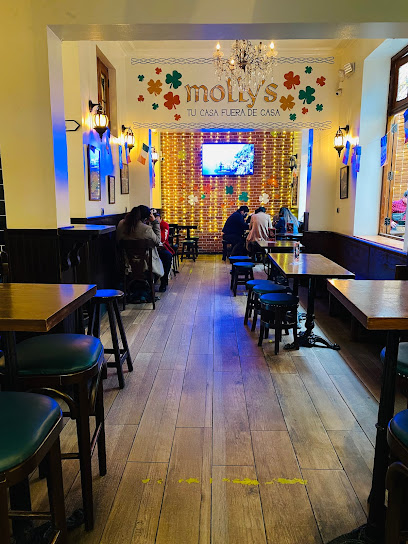
Houlihan's
Discover Houlihan's, a lively Irish pub in Miraflores, where delicious food meets an energetic sports bar ambiance for an unforgettable evening.
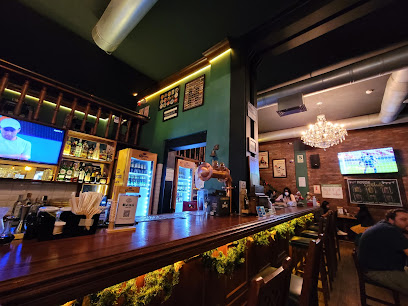
Carnaval
Experience the essence of modern Peruvian cuisine at Carnaval, a vibrant gastropub in San Isidro with unique flavors and an inviting atmosphere.
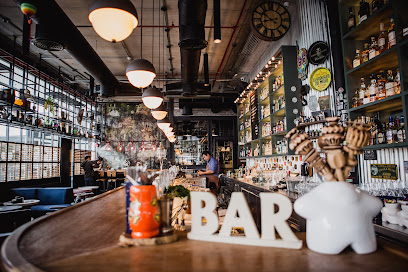
Nuevo Mundo Bar Lima
Discover the vibrant flavors of Nuevo Mundo Bar Lima, a grill and brewery offering delicious dishes and local craft beers in the heart of Miraflores.
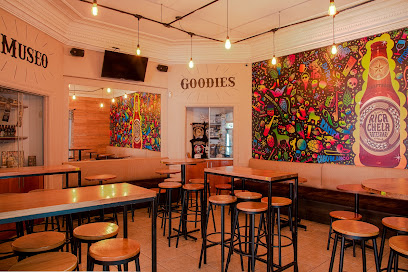
Vichama Rock Bar
Experience the vibrant nightlife of Lima at Vichama Rock Bar, where live music, delicious drinks, and a friendly atmosphere await.
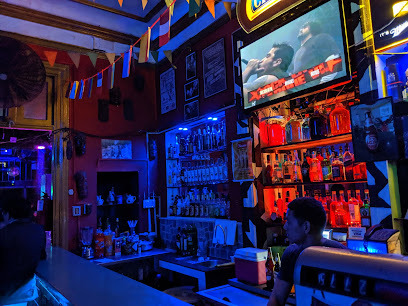
Lima Bar
Experience the vibrant nightlife at Lima Bar in Miraflores, where exquisite cocktails meet stunning ocean views for an unforgettable evening.
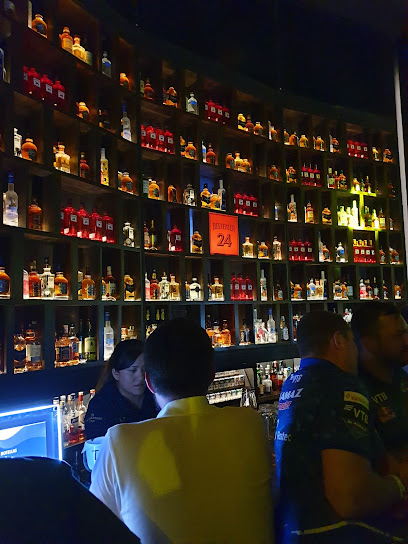
MUSEO DEL PISCO - LIMA
Experience the rich culture of Peru through its national drink at Museo del Pisco in Lima, where tradition meets flavor.
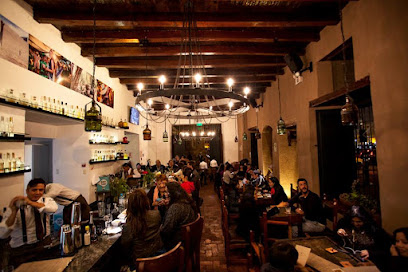
El Gringo Bar
Experience the vibrant nightlife of Barranco at El Gringo Bar, where lively cocktails and local culture come together for an unforgettable evening.
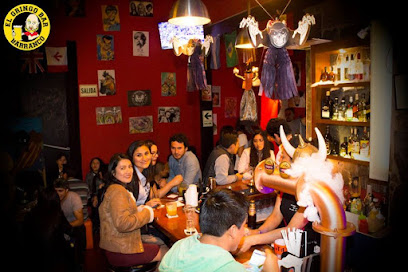
Hotel Bolivar Bar
Immerse yourself in the lively culture of Lima at Hotel Bolivar Bar, where classic charm meets modern nightlife.

Celeste Solar Bar
Experience the celestial vibes at Celeste Solar Bar in San Isidro, Lima, where creative cocktails and vibrant nightlife collide.
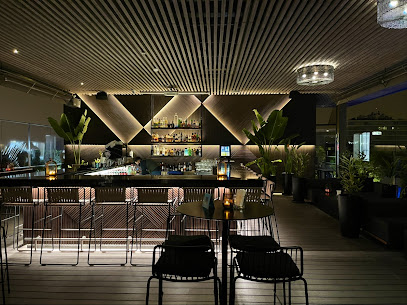
PALAIS COCKTAIL (BAR CULTURAL)
Discover the vibrant nightlife of Lima at Palais Cocktail, where creative cocktails and lively music create unforgettable experiences.
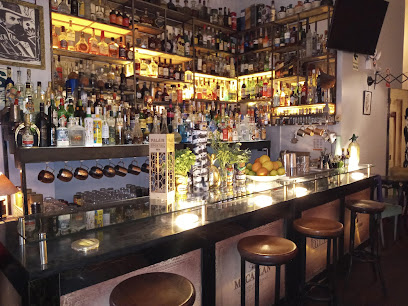
Saha Terraza Cocktail Bar
Experience vibrant nightlife and exquisite cocktails at Saha Terraza Cocktail Bar in the heart of Miraflores, Lima.
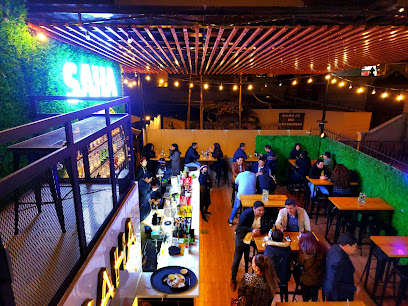
Clandestino Bar
Discover Clandestino Bar in Lima - a vibrant nightlife spot with creative cocktails, eclectic decor, and live music.
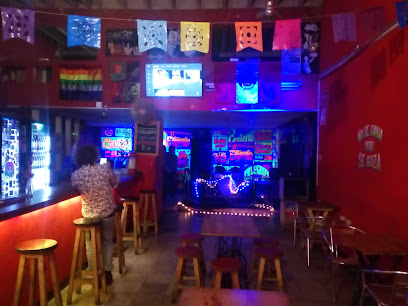
Tavern Bar Delfus
Discover the lively atmosphere and delicious tapas at Tavern Bar Delfus, a top cocktail bar in the heart of Miraflores, Lima.
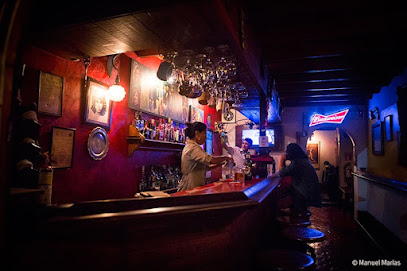
Nazca Pisco Lounge
Experience the vibrant nightlife at Nazca Pisco Lounge, where you can enjoy expertly crafted Pisco cocktails in a lively atmosphere.
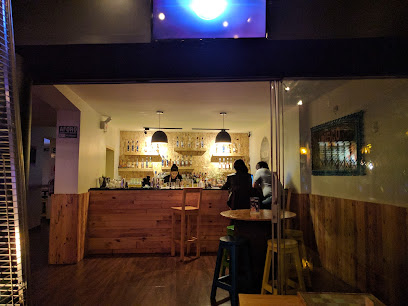
Local Phrases
-
- HelloHola
[oh-la] - GoodbyeAdiós
[ah-dee-ohs] - YesSí
[see] - NoNo
[noh] - Please/You're welcomePor favor/De nada
[pohr fah-bor/deh nah-dah] - Thank youGracias
[grah-see-ahs] - Excuse me/SorryPerdón/Lo siento
[pair-dohn/loh see-ehn-toh] - How are you?¿Cómo estás?
[koh-moh ehs-tahs] - Fine. And you?Bien. ¿Y tú?
[byehn. ee too] - Do you speak English?¿Hablas inglés?
[ah-blahs een-glehs] - I don't understandNo entiendo
[noh ehn-tee-ehn-doh]
- HelloHola
-
- I'd like to see the menu, pleaseQuisiera ver el menú, por favor
[kee-see-eh-rah vehr ehl meh-noo, poor fah-bor] - I don't eat meatNo como carne
[noh koh-moh kahr-neh] - Cheers!¡Salud!
[sah-lood] - I would like to pay, pleaseQuisiera pagar, por favor
[kee-see-eh-rah pah-gahr, poor fah-bor]
- I'd like to see the menu, pleaseQuisiera ver el menú, por favor
-
- Help!¡Ayuda!
[ah-yoo-dah] - Go away!¡Fuera!
[foo-eh-rah] - Call the Police!¡Llama a la policía!
[yah-mah ah lah poh-lee-see-ah] - Call a doctor!¡Llama a un médico!
[yah-mah ah oon meh-dee-koh] - I'm lostEstoy perdido
[ehs-toy pair-dee-doh] - I'm illEstoy enfermo
[ehs-toy ehn-fehr-moh]
- Help!¡Ayuda!
-
- I'd like to buy...Quisiera comprar...
[kee-see-eh-rah kohm-prahr] - I'm just lookingSolo estoy mirando
[soh-loh ehs-toy mee-rahn-doh] - How much is it?¿Cuánto cuesta?
[kwan-toh kwehs-tah] - That's too expensiveEso es muy caro
[eh-soh ehs moo-ee kahr-oh] - Can you lower the price?¿Puedes bajar el precio?
[pweh-dehs bah-hahr ehl pree-syoh]
- I'd like to buy...Quisiera comprar...
-
- What time is it?¿Qué hora es?
[keh oh-rah ehs] - It's one o'clockEs la una
[ehs lah oo-nah] - Half past (10)Son las diez y media
[sohn lahs dyehs ee meh-dee-ah] - MorningMañana
[mah-nyah-nah] - AfternoonTarde
[tahr-deh] - EveningNoche
[noh-cheh] - YesterdayAyer
[ah-yehr] - TodayHoy
[oy] - TomorrowMañana
[mah-nyah-nah] - 1Uno
[oo-noh] - 2Dos
[dohs] - 3Tres
[trehs] - 4Cuatro
[kwah-troh] - 5Cinco
[seen-koh] - 6Seis
[says] - 7Siete
[syeh-teh] - 8Ocho
[oh-choh] - 9Nueve
[nweh-veh] - 10Diez
[dyehs]
- What time is it?¿Qué hora es?
-
- Where's a/the...?¿Dónde está...?
[dohn-deh ehs-tah] - What's the address?¿Cuál es la dirección?
[kwal ehs lah dee-rek-syon] - Can you show me (on the map)?¿Puedes mostrarme (en el mapa)?
[pweh-dehs mohs-trar-meh (ehn ehl mah-pah)] - When's the next (bus)?¿Cuándo es el próximo (bus)?
[kwan-doh ehs ehl proh-ksee-moh (boos)] - A ticket (to ....)Un boleto (para ....)
[oon boh-leh-toh (pah-rah)]
- Where's a/the...?¿Dónde está...?
History of Lima
-
Lima, the capital of Peru, was founded by Spanish conquistador Francisco Pizarro on January 18, 1535. Pizarro named the city 'La Ciudad de los Reyes' (The City of Kings), as it was established during the feast of the Epiphany. The location was chosen strategically near the Rimac River, providing access to the coast and facilitating trade and defense.
-
During the 16th and 17th centuries, Lima became the most important city in Spanish South America. It served as the capital of the Viceroyalty of Peru, which encompassed a vast territory including modern-day Peru, Bolivia, Ecuador, Colombia, Argentina, Chile, and Paraguay. The city was a center for administration, commerce, and culture, flourishing with impressive architecture such as the Lima Cathedral and the Convent of San Francisco.
-
On October 28, 1746, Lima experienced one of the most devastating earthquakes in its history. The earthquake, followed by a tsunami, caused widespread destruction, killing thousands and demolishing the majority of the city's buildings. The disaster prompted significant reconstruction efforts, leading to the resilience and architectural development that can still be observed in Lima’s colonial buildings today.
-
Lima played a crucial role in Peru's fight for independence from Spanish rule. The city was the scene of significant revolutionary activity, culminating in the Battle of Ayacucho on December 9, 1824. This decisive battle, fought in the highlands near Ayacucho, led to the defeat of the Spanish forces and secured Peru's independence. Lima subsequently became the capital of the newly independent Republic of Peru.
-
Lima was significantly affected by the War of the Pacific (1879-1884), a conflict between Chile and the allied forces of Peru and Bolivia. In January 1881, Chilean troops occupied Lima, leading to a period of hardship and turmoil for the city. The occupation lasted until 1883, leaving a lasting impact on Lima's political and social landscape.
-
The 20th century brought significant changes to Lima, with rapid urbanization and population growth. The city expanded beyond its colonial core, incorporating diverse neighborhoods and becoming a melting pot of cultures. Major infrastructure projects, such as the construction of the Central Highway and the Pan-American Highway, facilitated Lima's transformation into a modern metropolis.
-
In recent decades, Lima has experienced a cultural renaissance, becoming a vibrant hub for arts, music, and literature. The city is also globally renowned for its culinary scene, with Peruvian cuisine gaining international acclaim. Lima hosts several world-famous restaurants and culinary festivals, attracting food enthusiasts from around the globe to experience its rich and diverse gastronomic heritage.
Lima Essentials
-
Lima, the capital city of Peru, is served by Jorge Chávez International Airport (LIM), located in Callao, about 10 kilometers from the city center. Direct flights are available from major cities around the world. From the airport, you can take a taxi, airport shuttle, or public bus to your accommodation. Taxis are the most convenient but ensure you use registered taxi services for safety.
-
Lima has a variety of transportation options. Public buses and the Metropolitano bus rapid transit system are affordable ways to get around the city, although they can be crowded. Taxis and ride-sharing services like Uber and Cabify are widely available and convenient. For short distances, you can use 'combis' or small minibuses, but they can be confusing for newcomers. Renting a car is an option but be aware of heavy traffic and aggressive driving styles.
-
The official currency in Peru is the Peruvian Sol (PEN). Credit and debit cards are widely accepted in hotels, restaurants, and major stores. However, it's advisable to carry cash for smaller establishments and markets. ATMs are plentiful throughout Lima, but be cautious when withdrawing money, especially at night. Currency exchange services are available at the airport, banks, and exchange offices (casas de cambio).
-
While Lima is generally safe for tourists, it's important to take standard precautions. Avoid walking alone at night in unfamiliar areas and be vigilant in crowded places to prevent pickpocketing. Areas like Callao, La Victoria, and certain parts of downtown Lima have higher crime rates, so exercise extra caution. Use registered taxis, especially at night, and avoid flashing valuables.
-
In case of an emergency, dial 105 for the police, 116 for the fire department, and 106 for medical emergencies. Major hospitals, like Hospital Nacional Arzobispo Loayza and Clínica Internacional, offer emergency medical services. It's highly recommended to have travel insurance that covers medical emergencies. Pharmacies are widely available for minor health issues.
-
Fashion: Do dress modestly when visiting religious sites and more conservatively in general. Avoid wearing flashy jewelry. Religion: Do respect local customs and traditions. When visiting churches, dress modestly and remain quiet. Public Transport: Do be polite and offer your seat to elderly passengers. Don't eat or drink on public transport. Greetings: Do greet people with a handshake or a nod. A kiss on the cheek is common among friends. Eating & Drinking: Do try local dishes like ceviche and lomo saltado. Don't refuse an offer of food or drink, as it is considered impolite.
-
To experience Lima like a local, visit the local markets such as Mercado Central and Mercado de Surquillo for fresh produce and traditional foods. Spend an afternoon in the bohemian district of Barranco, known for its vibrant street art and music scene. Try the local pisco sour cocktail and enjoy Peruvian cuisine at local 'cevicherías'. Engage with locals, who are generally friendly and willing to share their culture. Don't miss the historic center of Lima, a UNESCO World Heritage Site, and the coastal path 'Malecón' in Miraflores for stunning ocean views.
Trending Landmark in Lima
-
Magic Water Circuit of the Reserve Park
-
Lima Main Square
-
St Martin Square
-
Love's Park
-
Iglesia Las Nazarenas
-
Basílica and Convent of San Francisco, Lima
-
Maria Reiche Park
-
Huaca Pucllana Site Museum
-
Paseo de los Heroes Navales - Plaza Grau
-
Miguel Grau Square
-
Larco Museum
-
Muninet Parque La Muralla
-
PLAZA DE LA BANDERA
-
Marine Lighthouse
-
Lima Cathedral
Nearby Cities to Lima
-
Things To Do in Huancayo
-
Things To Do in Ica
-
Things To Do in Huaraz
-
Things To Do in Ayacucho
-
Things To Do in Trujillo
-
Things To Do in Machu Picchu
-
Things To Do in Cusco
-
Things To Do in Chiclayo
-
Things To Do in Arequipa
-
Things To Do in Piura
-
Things To Do in Puno
-
Things To Do in Loja
-
Things To Do in Copacabana
-
Things To Do in Tacna
-
Things To Do in Iquitos



